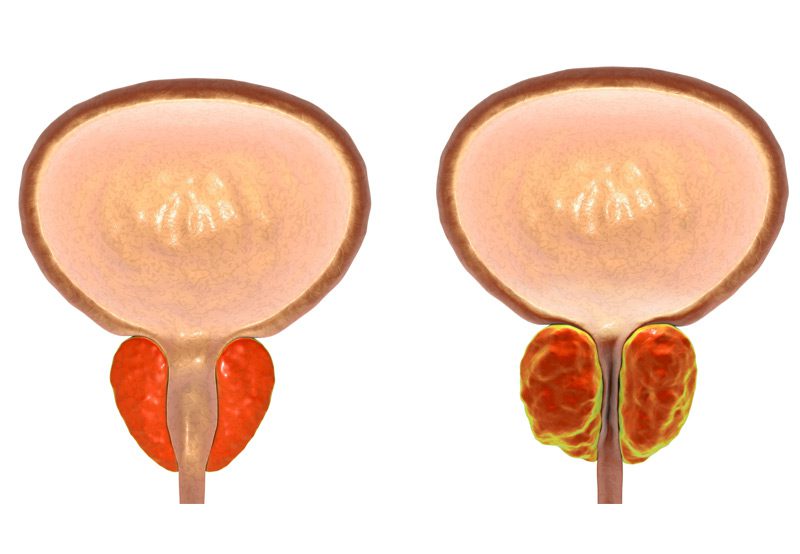

Benign prostatic hyperplasia (BPH) is characterized by an enlarged prostate gland that may cause uncomfortable urinary symptoms. BPH can cause problems with the bladder, urinary tract, or kidneys. Men may also have difficulty fully emptying their bladder.
Treatment options for prostate gland enlargement may include medications, minimally invasive therapies, and surgery.
Symptoms of BPH
Left untreated, symptoms of BPH worsen over time. Signs of benign prostatic hyperplasia include:
- Frequent urination at night (nocturia)
- Frequent or urgent need to urinate
- Weak urine stream
- Urine leakages
- Difficulty beginning urination
Less common signs of BPH include:
- Blood in the urine
- Urinary tract infection (UTI)
- Development of bladder stones
The size of the prostate is not always directly linked to the severity of symptoms. Some men with a slightly enlarged prostate may have severe symptoms, while others with very enlarged prostates may only have minor urinary symptoms.

Causes of Benign Prostatic Hyperplasia
The prostate gland is located beneath the bladder. A tube transports urine from the bladder out of the penis (urethra) and passes through the center of the prostate. If the prostate becomes enlarged, it may block urine flow.
Prostate growth typically continues for men throughout life. Many men may experience urinary symptoms as a result of continued prostate growth.
The exact cause of an enlarged prostate isn’t known, but it may be related to changes in hormone balance as men age.
Risk Factors
The risk of developing BPH is increased by the following factors:
- Aging
- Family history
- Increase in the production rate of cells (hyperplasia)
Diagnosis for BPH
Because symptoms of an enlarged prostate are often associated with other medical conditions, a urologist will begin by ordering blood and urine tests, conducting a urinary flow test, and doing a digital rectal exam to check the size of the prostate.
An enlarged prostate is associated with increased PSA levels. A prostate-specific antigen (PSA) blood test could reveal if a patient has an enlarged prostate.
Another way to identify or diagnose BPH could involve keeping a diary documenting urination frequency and amount of urine produced. A urologist may also order a prostate biopsy to rule out prostate cancer.
Treatment Options For BPH
The right treatment for the patient is tied to their overall health, prostate size, and symptom severity.
An enlarged prostate may be treated with medications that include alpha blockers, 5-alpha reductase inhibitors, and combination drug therapy.
Some patients may need to undergo minimally invasive or surgical therapy. This may be the right treatment option if:
- Symptoms are increasingly bothersome
- Urine flow is blocked
- Medication has failed to provide relief
A few different types of treatment include:
- Removing tissues and ease pressure on the bladder
- Embolization to block the blood supply to the prostate to reduce its size
- Prostatectomy to remove all or part of the prostate through open or robot-assisted surgery
- Laser therapy to remove excess tissue in the prostate
- Prostate lift procedures that involves compressing the sides of the prostate to increase urine flow
- Rezūm, which uses the stored thermal energy in water vapor (steam) to target the extra prostate tissue that is causing symptoms
Patients should speak to their doctor to determine which treatment is best for them.
